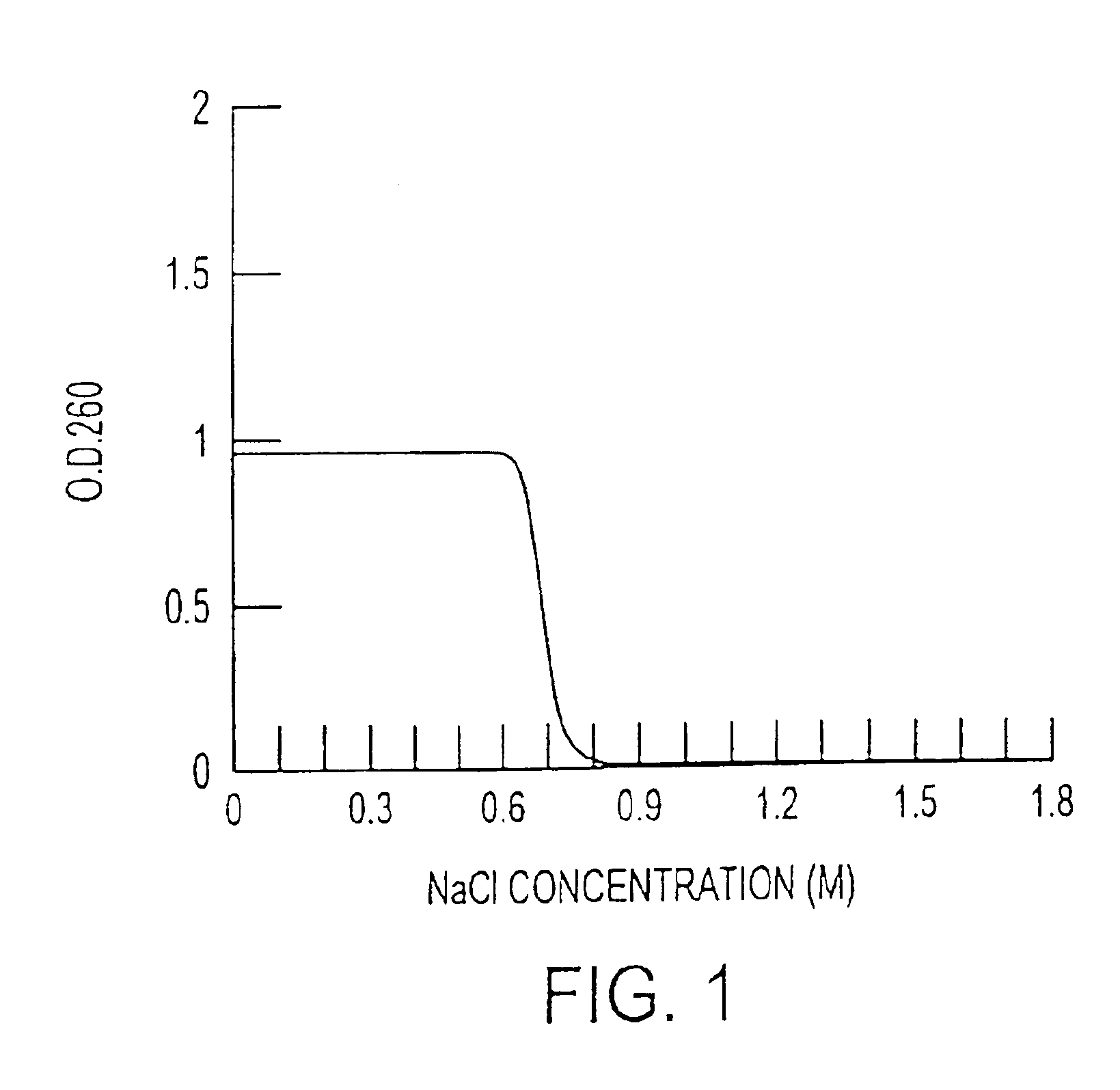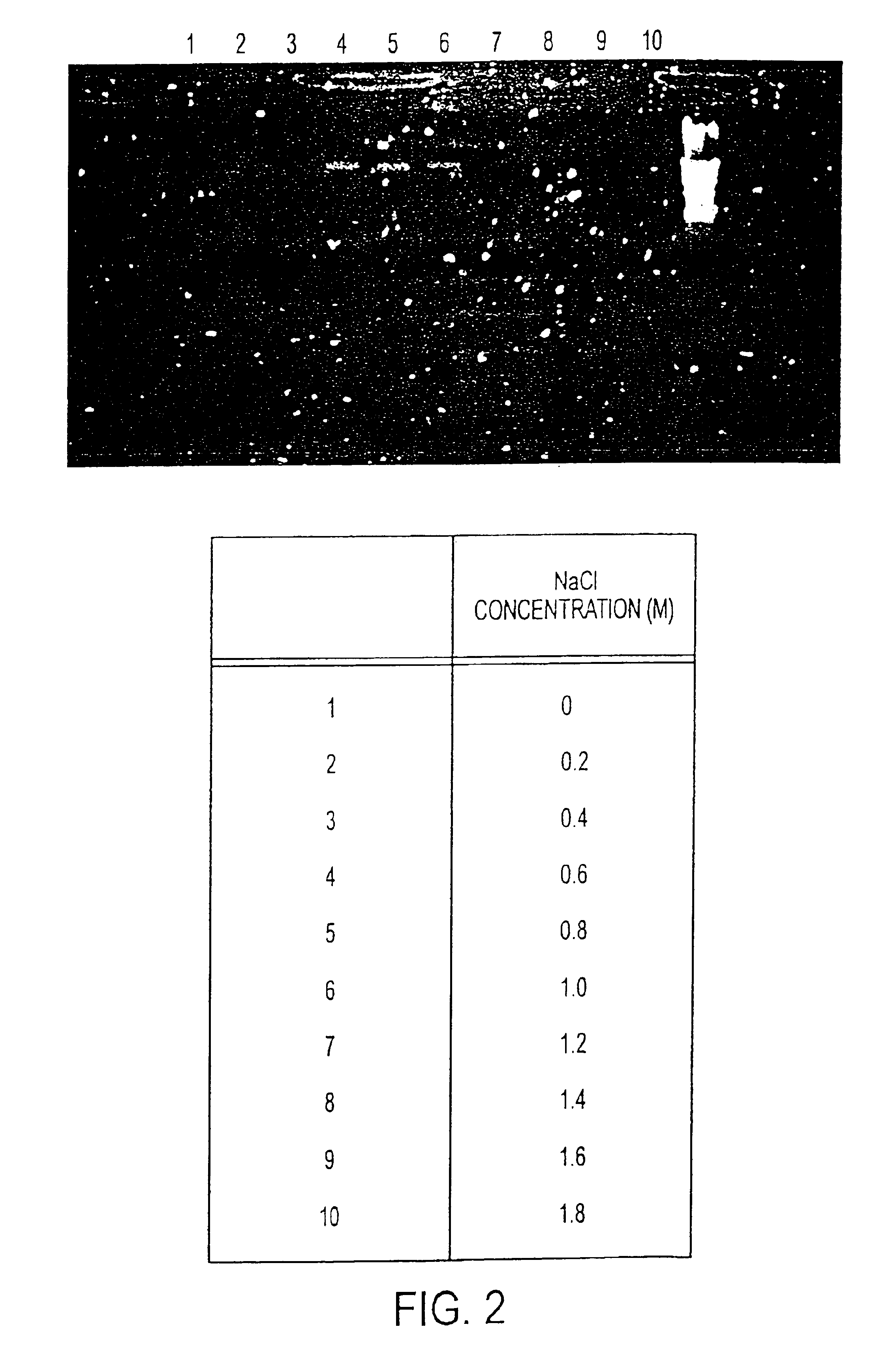Method for isolating DNA
a dna isolation and dna technology, applied in the field of isolating dna, can solve the problems of inability to efficiently isolate or recover dna, inability to isolate dna from biological samples without preliminary treatment,
- Summary
- Abstract
- Description
- Claims
- Application Information
AI Technical Summary
Problems solved by technology
Method used
Image
Examples
example 1
[0068]1) 750 μl of lysing solution A with the following composition were added to whole blood of 300 μl (for a microfilter of Eppendorf tube size).
Lysing Solution A:[0069]Urea 25% (w / v)[0070]CTAB (cetyltrimethylammonium bromide) 0.45%[0071]NaCl 0.8 M[0072]EDTA 15 mM[0073]Tris pH 7.1, 80 mM[0074]Glycerol 10% (v / v)[0075]Diatomaceous earth (manufactured by Sigma, Co.; acid rinsed and calcined) 1% (w / v)[0076]Cellulose (manufactured by Sigma, Co.; alpha-cellulose) 0.3%[0077]Glycerol advantageously allows the easy manipulation of silica matrix and avoids the packing thereof.
[0078]The solution comprises a DNA-binding matrix and was agitated with a magnetic stirrer prior to use. The DNA-binding matrix was dissolved together with inert matrices, so as to allow the prompt resuspension of the DNA-binding matrix per se and thereby enhance the reproducibility of the extraction.
[0079]After addition of the lysing solution, the mixture was completely mixed together by inversion or weak agitation. T...
example 2
[0100]DNA was isolated in the same manner as in Example 1, except for the modification of the NaCl concentration in the lysing solution between 0 and 1.8 M. The aqueous resuspended DNA solution was electrophoresed. The results are shown in FIG. 2. Consequently, it is indicated that DNA was isolated well at the NaCl concentration within a range of 0.6 to 1.0 M. Within a range of 0 to 0.4 M, the resulting DNA was contaminated with the protein in the biological sample, indicating that the purification was insufficient. In the case that the NaCl concentration was 1.2 M or more, no DNA could be recovered. This was possibly ascribed to no adsorption of DNA on the carrier.
[0101]In accordance with the invention, a method for recovering purified DNA at a high DNA yield using biological samples without preliminary treatment can be provided.
[0102]The inventive method does not require complicated procedures such as centrifugation or extraction but requires the use of apparatuses of simpler stru...
PUM
| Property | Measurement | Unit |
|---|---|---|
| temperature | aaaaa | aaaaa |
| volume | aaaaa | aaaaa |
| concentration | aaaaa | aaaaa |
Abstract
Description
Claims
Application Information
 Login to View More
Login to View More - R&D
- Intellectual Property
- Life Sciences
- Materials
- Tech Scout
- Unparalleled Data Quality
- Higher Quality Content
- 60% Fewer Hallucinations
Browse by: Latest US Patents, China's latest patents, Technical Efficacy Thesaurus, Application Domain, Technology Topic, Popular Technical Reports.
© 2025 PatSnap. All rights reserved.Legal|Privacy policy|Modern Slavery Act Transparency Statement|Sitemap|About US| Contact US: help@patsnap.com


